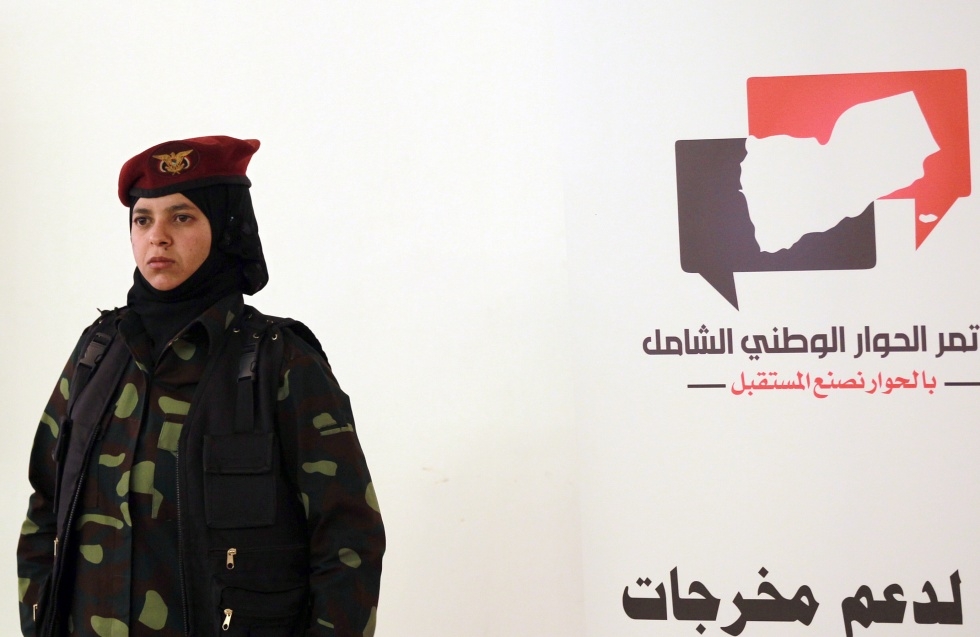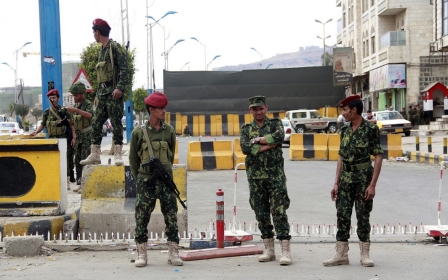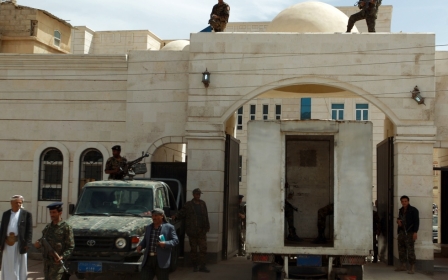Fact file: Yemen's many factions

A 2011 uprising in Yemen led to the removal of former president Ali Abdullah Saleh and sparked a rebuilding process aimed at securing a safe, stable and representative state.
A political vacuum has emboldened groups who oppose centralised governmnet in the capital Sana'a, while a humanitarian crisis has left more than half the country's 24 million population requiring assistance.
Houthis
Who are they? The Houthis are a rebel group whose members are Zaidi Shia Muslims. They have been fighting since 2004, and say that they aim to oppose the discrimination faced by Zaidis in Yemen. In February 2011, during anti-government protests, the Houthi leader came out in support of regime change. Following this, large groups of Houthis joined demonstrations throughout Northern Yemen.
Where are they most active? Since the outbreak of conflict in 2004, the majority of clashes between government and Houthi forces have taken place in north-western Yemen, in the Sa’dah Governorate. In 2008 the UN estimated that Sa’dah is now home to 77,000 people internally displaced by the fighting.
New MEE newsletter: Jerusalem Dispatch
Sign up to get the latest insights and analysis on Israel-Palestine, alongside Turkey Unpacked and other MEE newsletters
In August 2009, fighting at Yemen’s southern border with Saudi Arabia led to clashes between the Houthis and Saudi forces.
How many are there? Estimates vary wildly. In 2009 The Economist reported that the group had a maximum of 10,000 fighters.
Who holds the purse-strings? The Yemeni government has consistently accused the Houthis of having foreign backing, and specifically of being funded by Iran.
Ahmars
Who are the group members? Ahmar is an established name in Yemen. The Ahmar family head the Hashid tribal confederacy, the strongest tribal group in the country. They led protests against President Ali Abdullah Saleh in 2011. Hamid al-Ahmar, a multimillionaire tycoon, also heads the Yemeni Congregation for Reform, commonly known as the Islah Party. It is the most prominent opposition party in Yemen, and is affiliated with Yemen’s Muslim Brotherhood.
Where are they most active? Supporters of the Ahmar tribe are concentrated in the mountainous areas of north and north-west Yemen.
How many are there? Unknown.
Who holds the purse-strings? As heads of the second-largest and most powerful tribal confederacy in Yemen, the Ahmars have access to ample material and human resources. In 2011 he is reported to have tried to appease the Houthis by sending bags of food, cash and qat.
The General People’s Congress (GPC)
What is it? The GPC is a Yemeni political party that was founded in 1982 by former president Ali Abdullah Saleh, who was forced from power in February 2012 after more than a year of protests against his rule. It is the country’s largest party, winning 238 of 301 seats in the House of Representatives during the last elections held in 2003.
What is their political agenda? Arab nationalism and unity, although the party is viewed by many as a tool of power for former president Saleh. In early 2011 the GPC dominated parliament approved abolishing presidential term limits to allow for Saleh to remain as president indefinitely.
How has the 2011 uprising impacted it? Many prominent members, including the Yemeni ambassador to the United Nations, left the party during the uprising in a protest against attacks by government forces on protestors. Since the party leadership announced support for a new federal system of governance there has been much dissent among members who believe this undermines their fundamental value of believing in Arab unity.
What does the future hold? Party members are currently discussing how to reform and strengthen its organisational structure. While some members left to join the opposition during the uprising the party still retains significant influence, as can be seen by its presence on the committee overseeing the national dialogue process. Prominent member Nabil Abdulrab recently called for the party to abandon its traditional leadership of older political figures and refocus on recruiting the youth to secure its future as a political force.
The National Dialogue Conference (NDC)
What was it? The NDC was established as part of a GCC brokered deal to plan for Yemen’s future after former president Saleh agreed to relinquish power in exchange for immunity from prosecution. It ran between March 2013 and January 2014 with a mandate of finding a nationwide framework for rebuilding the country.
What was the format? 565 delegates – from all political parties, differing areas of the country and including representatives from civil society – split into nine working groups to tackle the most important political, regional and humanitarian issues facing Yemen. The process was headed by a nine-member committee that included the president and leaders of all the political parties.
Was it successful? Yes, insomuch that the process avoided a civil war, was genuinely inclusive and ended with a hard-fought agreement being signed by all participants in the capital Sana’a on 25 January 2014. Violence has continued to plague Yemen, however, and throughout the NDC both the security and humanitarian situations have severely deteriorated.
What was agreed? President Hadi is to have his term extended by 1-year to oversee the political transition, parliament is to be reformed so members are equally split between coming from the north and south, and Yemen is to become a six-member federal system.
What wasn’t? Delegates failed to agree on a new political system to fairly represent southern Yemen, the scene of a powerful separatist movement since 2007. Calls for an independent separate state remain strong from southerners who feel politically and economically marginalised by the Sana’a government.
What happens next? Implementation of the NDC agreement will involve negotiations over practical implementation of the document and include the construction of viable public institutions. Elections were due to be held in February but have been delayed and a constitution drafting process is on-going. International donors have called for economic and political reform to address a deepening humanitarian crisis but with national unity remaining elusive the likelihood is that Yemen will continue to struggle in constructing a safe, stable and representative state in the coming months and years.
Middle East Eye delivers independent and unrivalled coverage and analysis of the Middle East, North Africa and beyond. To learn more about republishing this content and the associated fees, please fill out this form. More about MEE can be found here.




